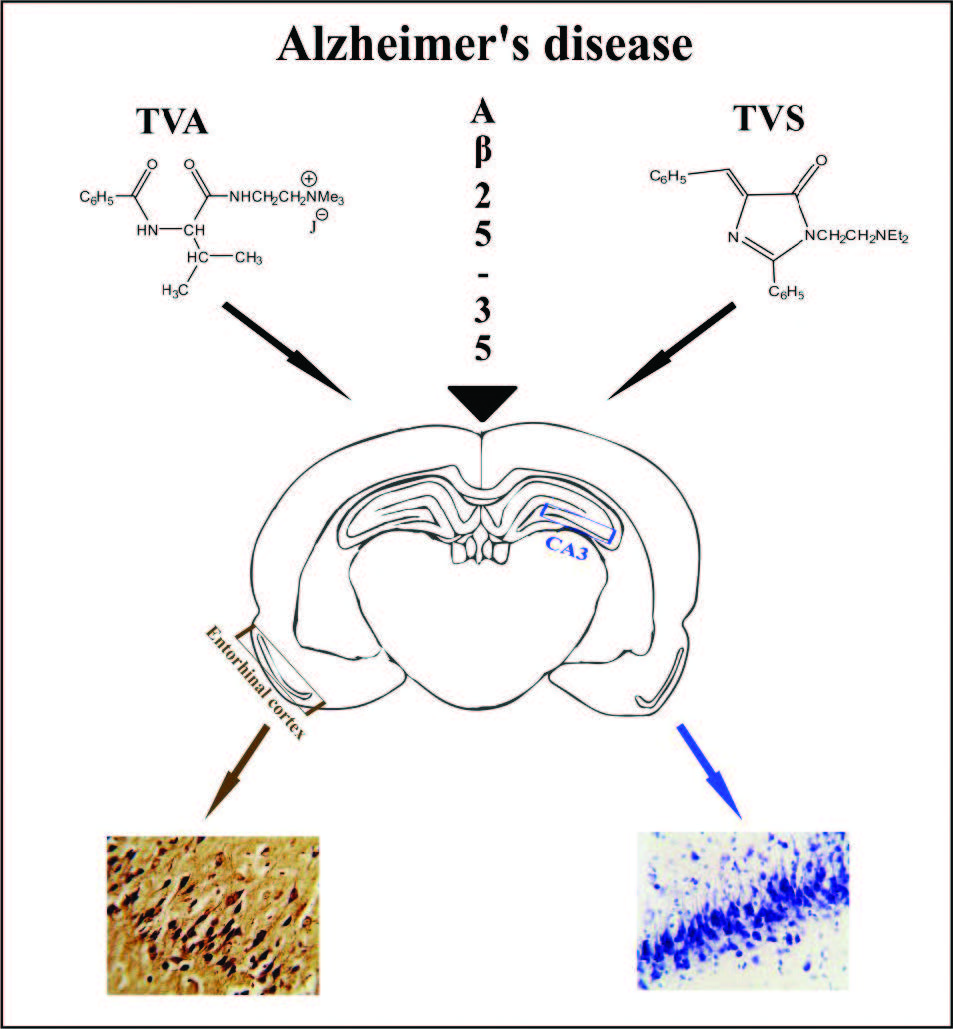Study of neuroprotective activity of new acetylcholinesterase inhibitors TVA and TVS in experimental model of Alzheimer’s disease
DOI:
https://doi.org/10.3897/rrpharmacology.8.87431Аннотация
Introduction: Alzheimer’s disease (AD) is a severe neurodegenerative disease characterized by loss of synaptic connection between neurons of the cortex and subcortical regions. The cholinergic deficit is a consistent and early finding in AD, hence acetylcholinesterase inhibitors (AChEIs) are used for symptomatic improvement of AD. Most of these therapeutic agents are hepatotoxic, leading to liver failure and other complications. Therefore, the study of new AChEIs with less toxic impact and better effectivity is a topical challenge. In view of this, we synthesized novel chemical compounds: TVA and TVS that possess AChEI activity and studied their neuroprotective effect in an experimental AD model.
Materials and methods: Studies were performed on white rats. Acute toxicity studies were performed by Karber’s method. AD was induced via bilateral intracerebroventricular administration of Aβ 25–35. Histopathological examinations were performed in the hippocampus and the entorhinal cortex. Liver tissue was additionally examined to monitor the hepatotoxicity of these compounds.
Results: Studies of the hippocampus showed that compared to control and TVA-treated groups, under the influence of TVS there were few morphological alterations. Experimental groups showed an increase in the glial cell count, compared to the intact animals. In comparison to the AD group, the increase in microglia was not that prominent under the action of the novel compounds. Under the influence of TVA and TVS, the entorhinal cortex was more susceptible to neuronal injury, although TVS protected pyramidal neurons. Also, the group treated with TVA had signs of acute liver damage, while under the influence of TVS there were no signs of liver changes.
Discussion: Histopathological examination showed that the neurodegenerative processes in the hippocampus, as well as in the entorhinal cortex, were significantly reduced under the influence of TVS, compared with the control group. At the same time, TVA had no significant effect on the protection of neuronal cells. Also, TVS was less toxic, and there was no sign of hepatotoxicity during the experiments.
Conclusion: These studies demonstrated that TVS possesses neuroprotective activity and reduces neuronal damage induced by Aβ.
Graphical abstract:
 Русский
Русский
 English
English

